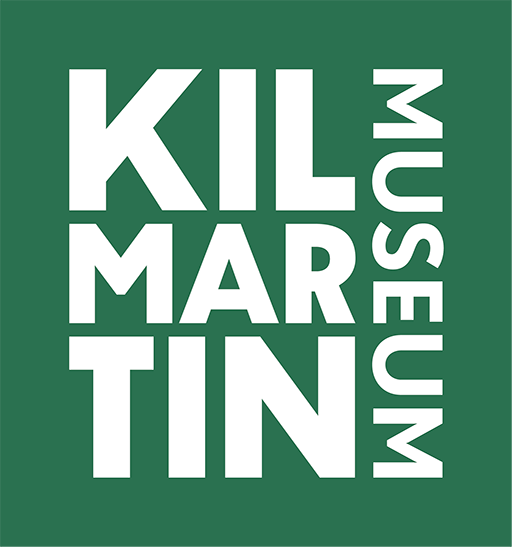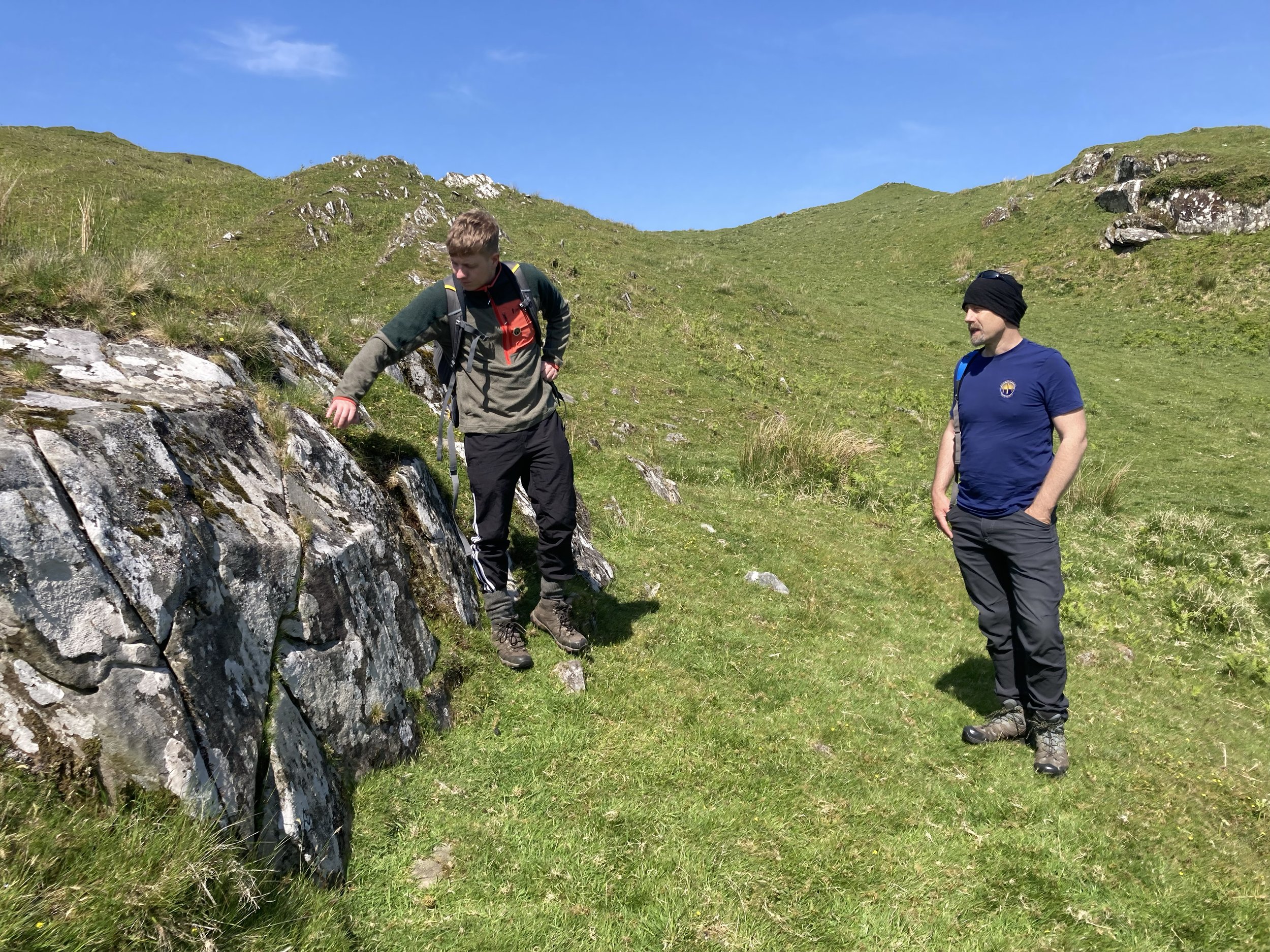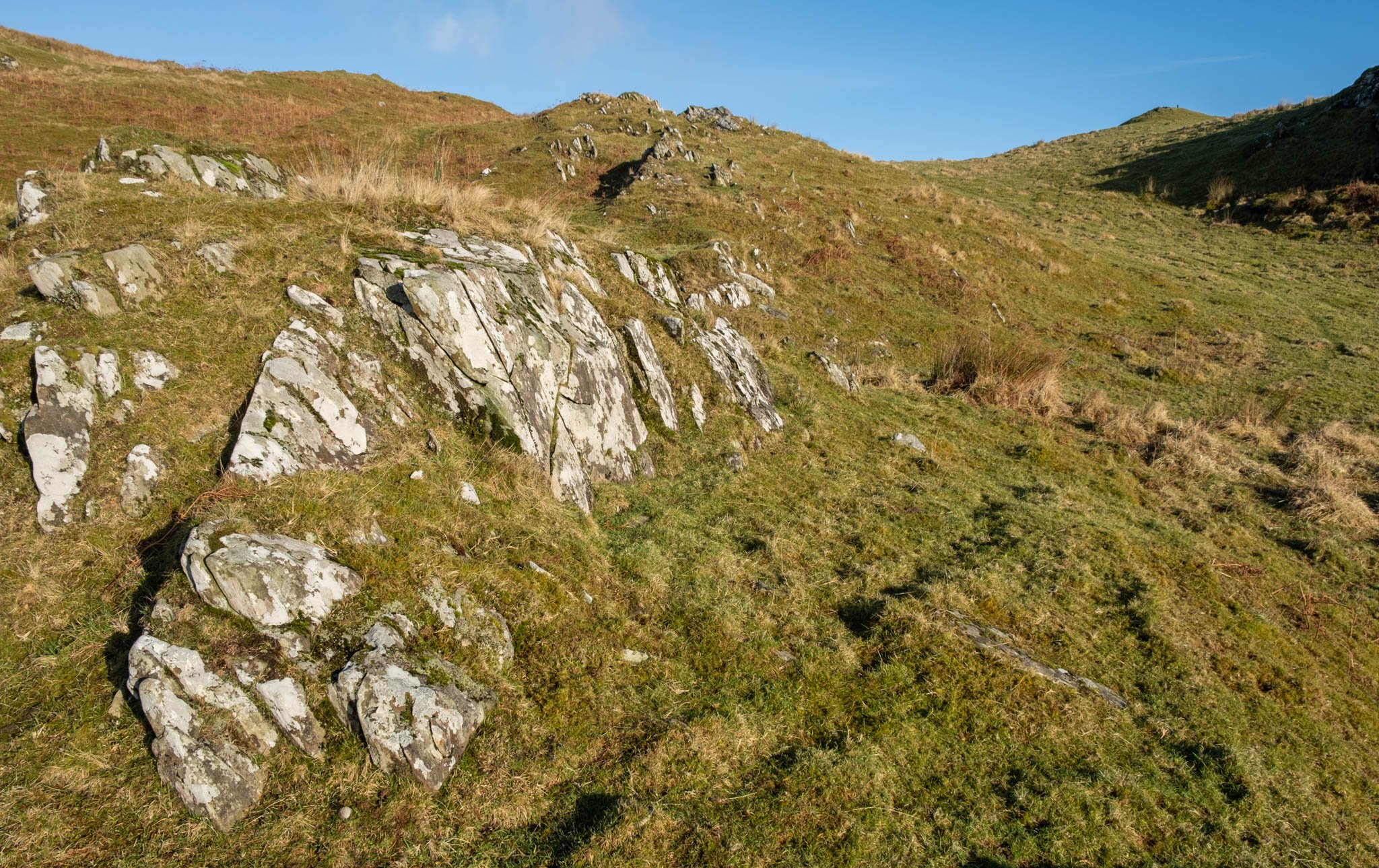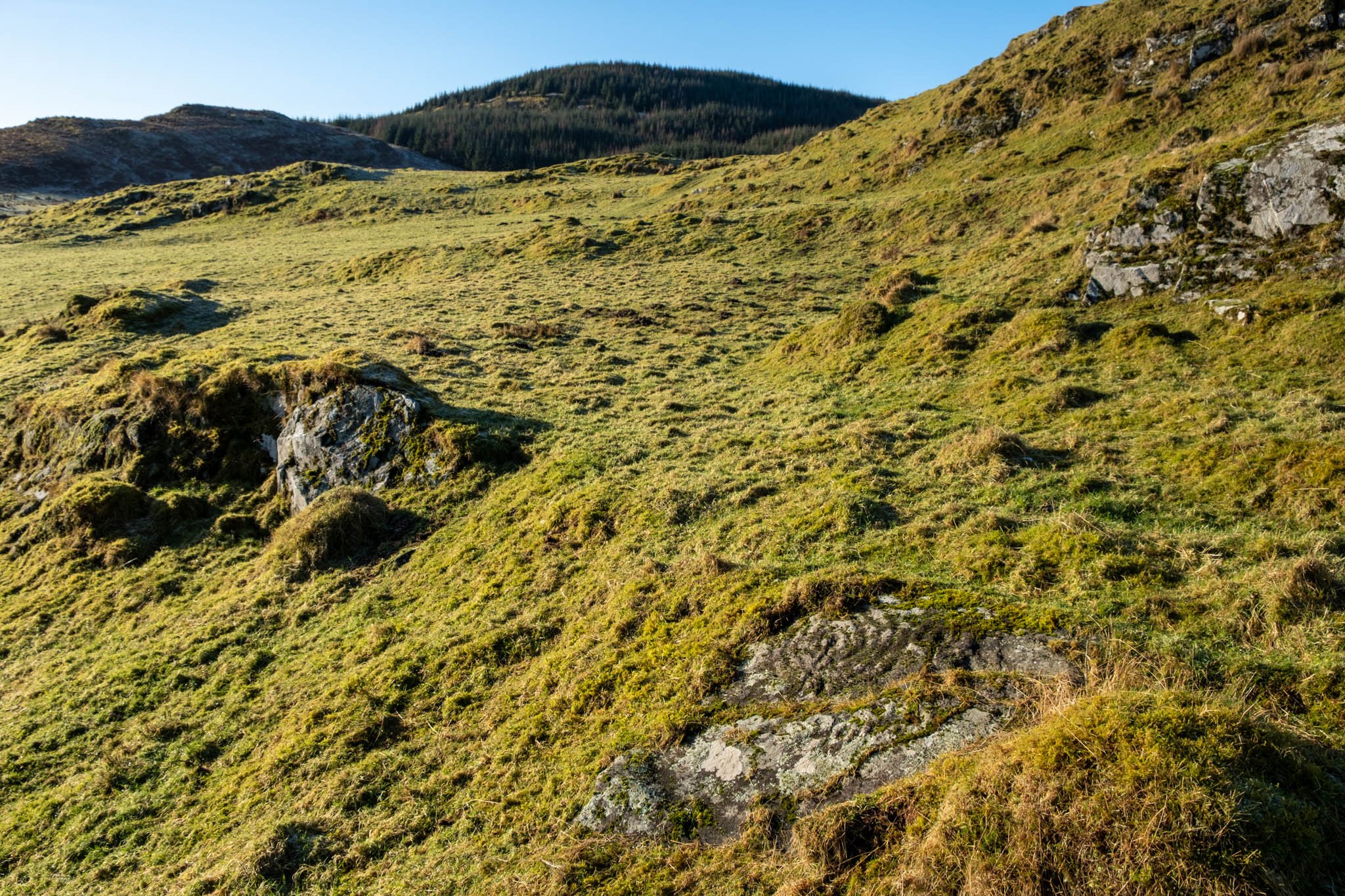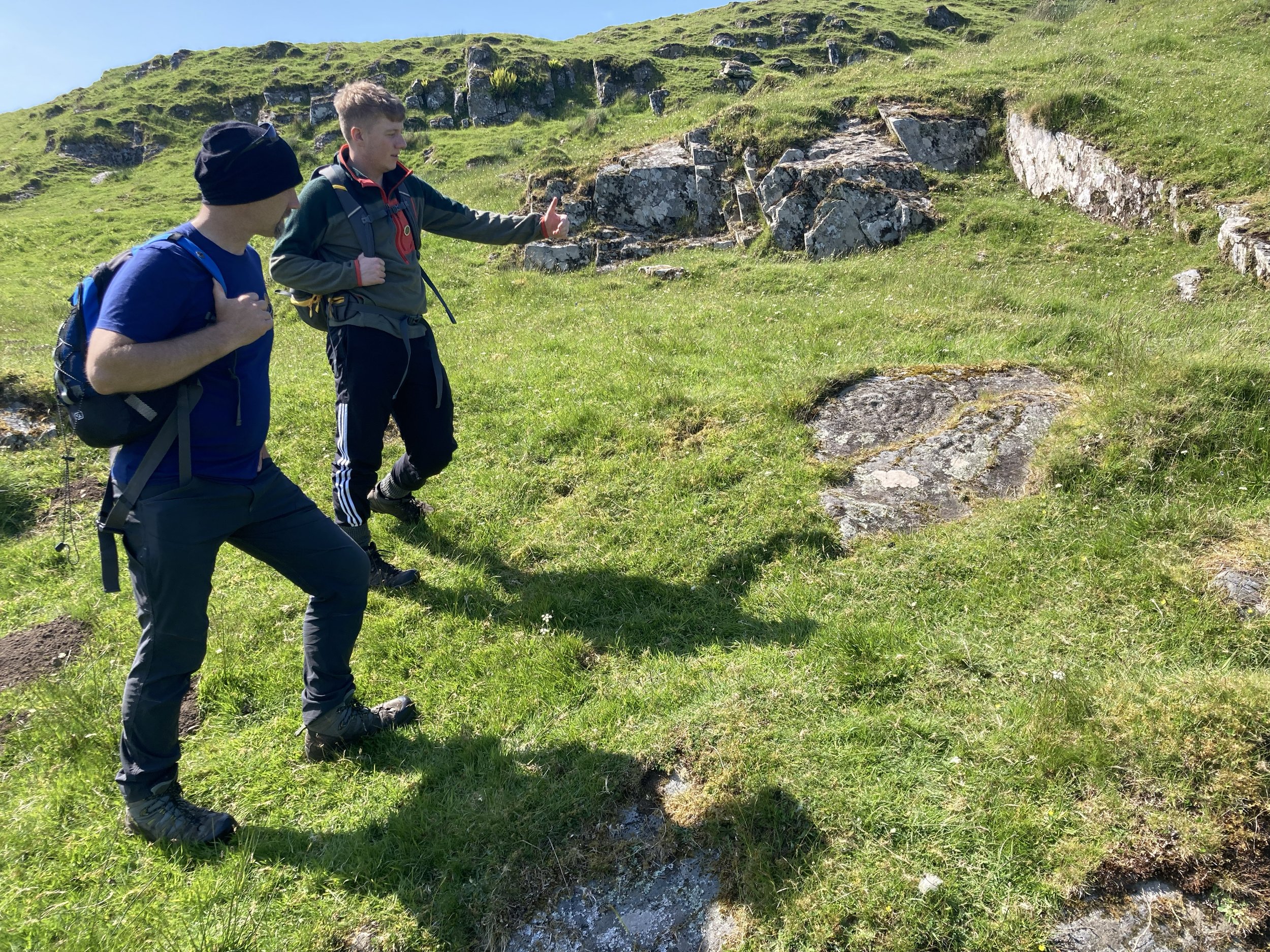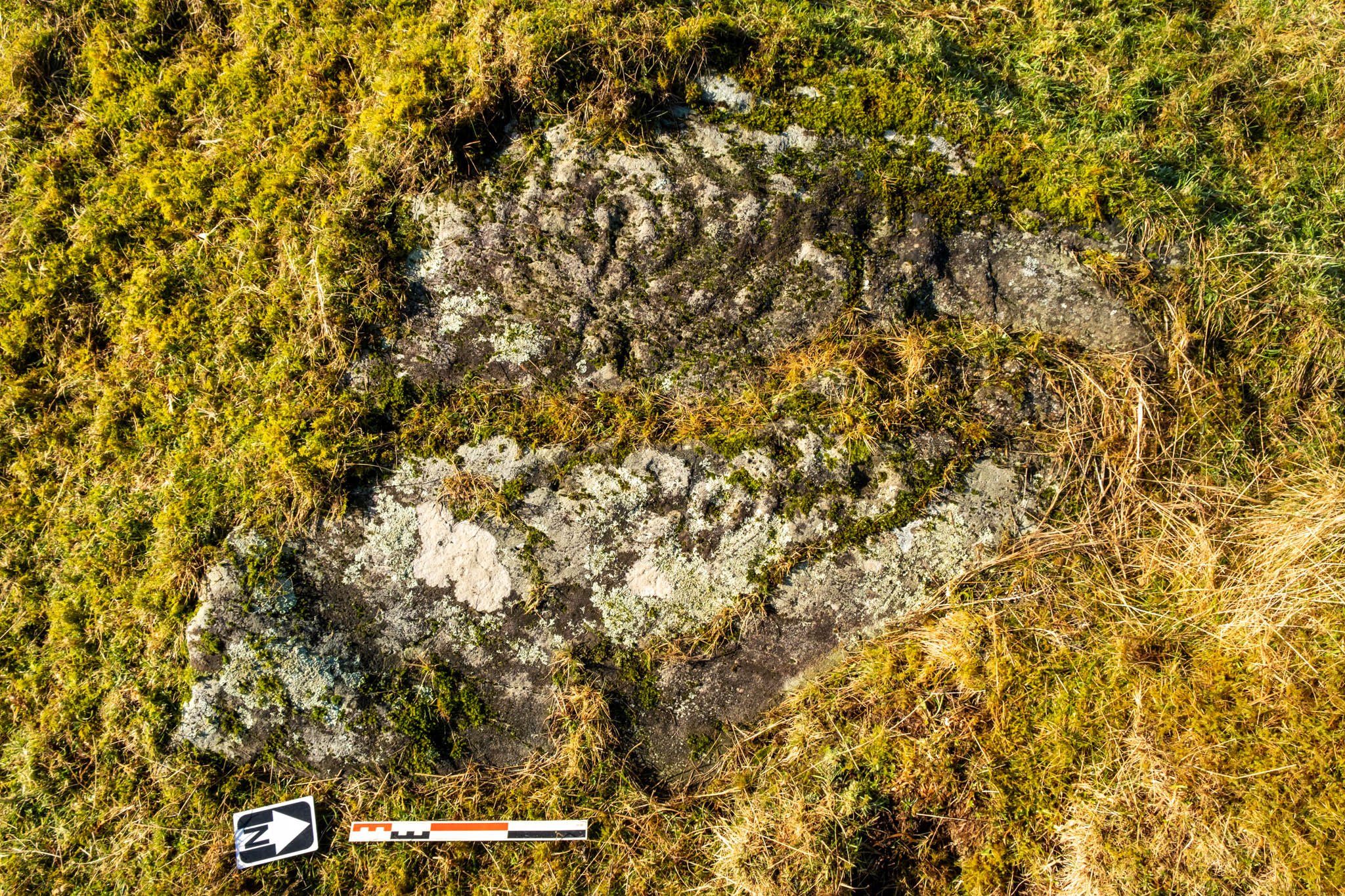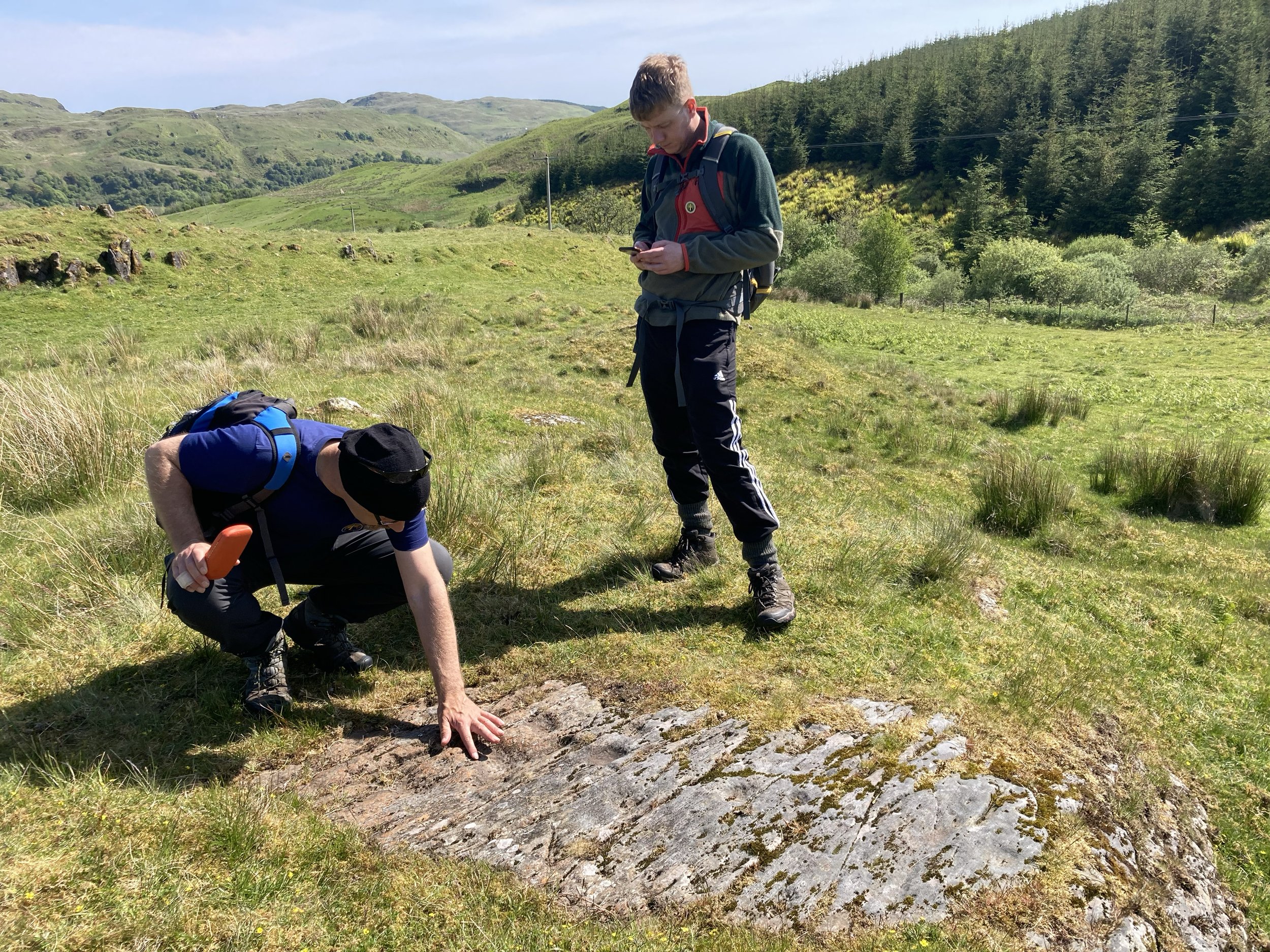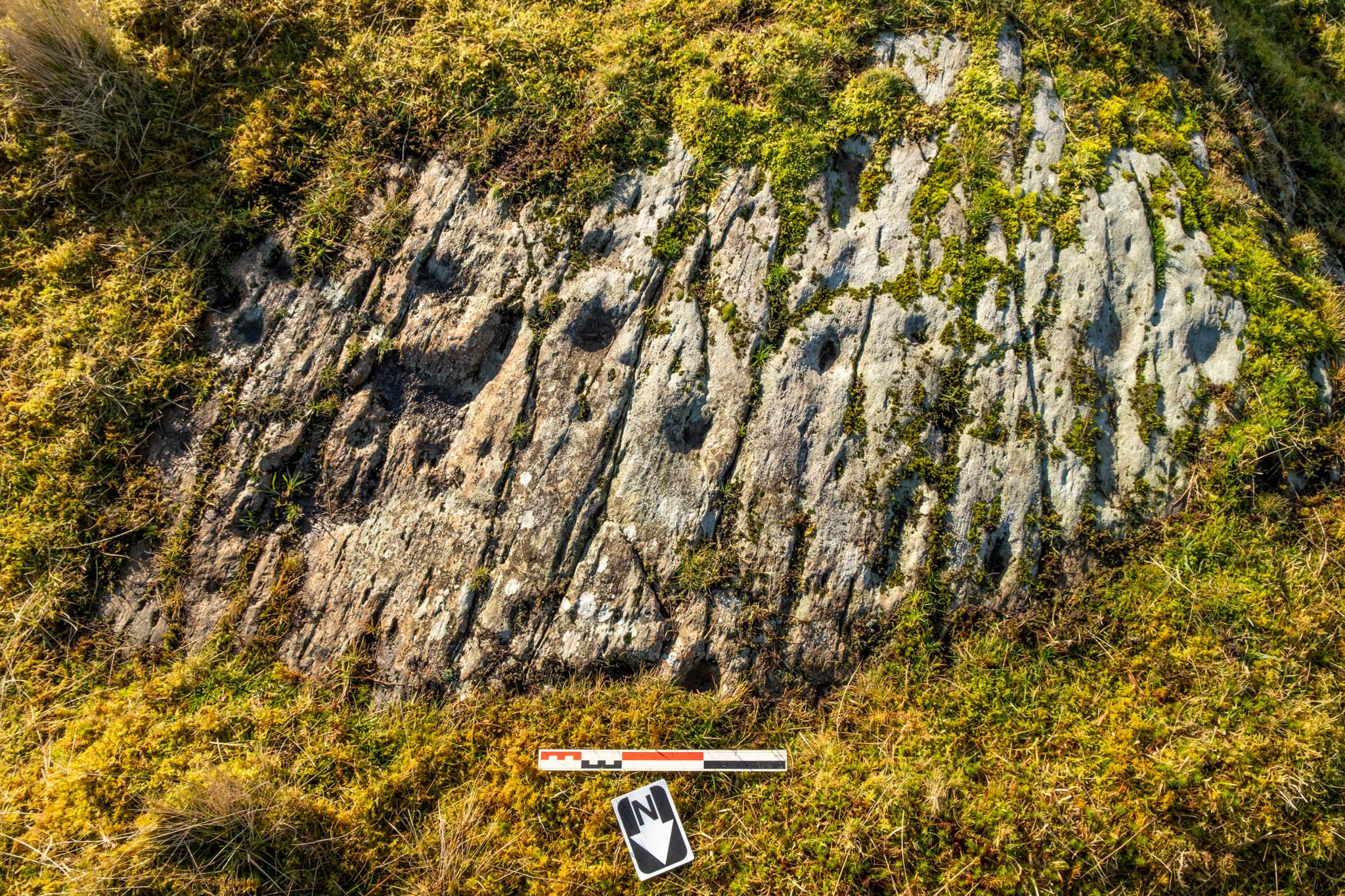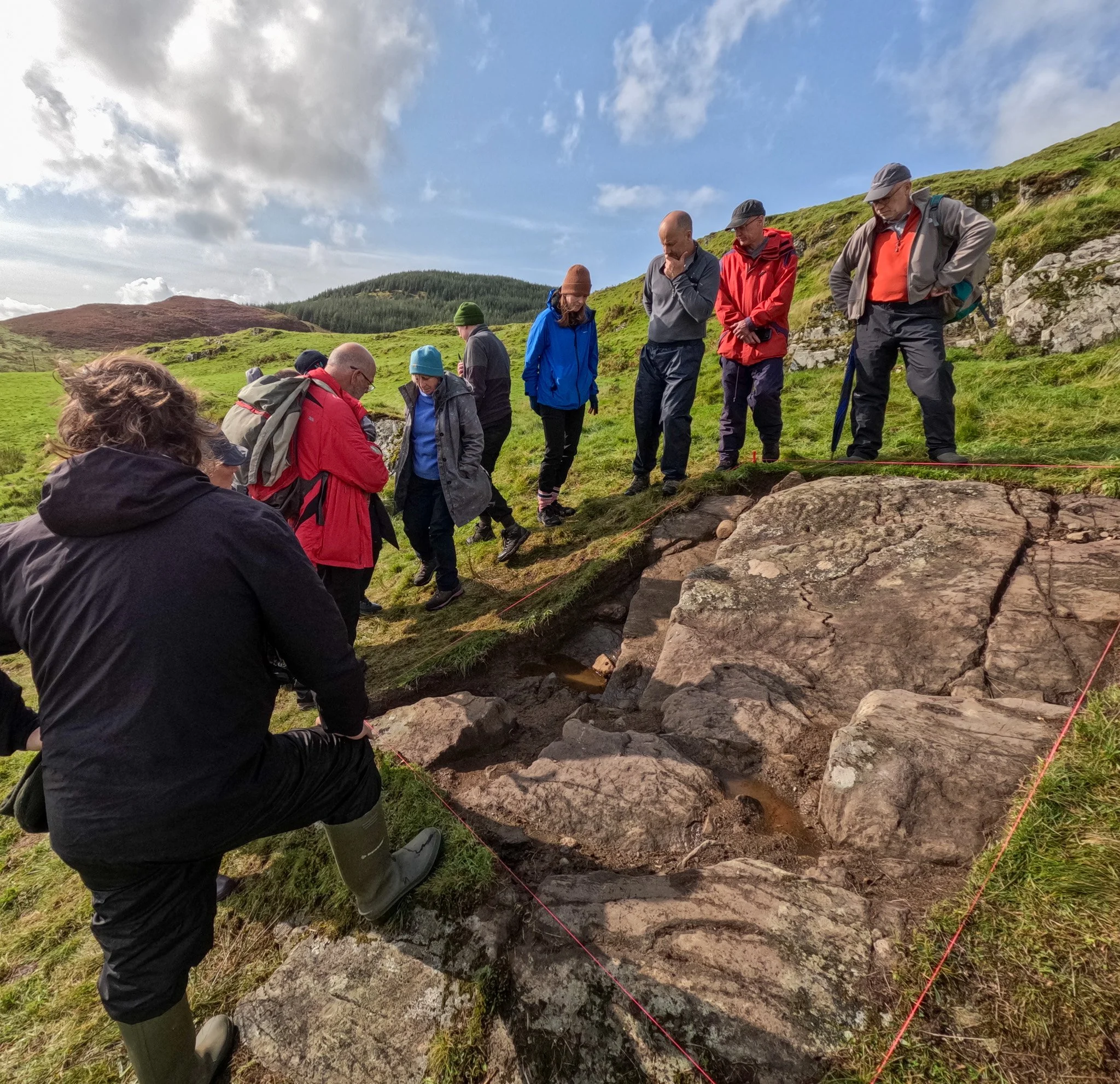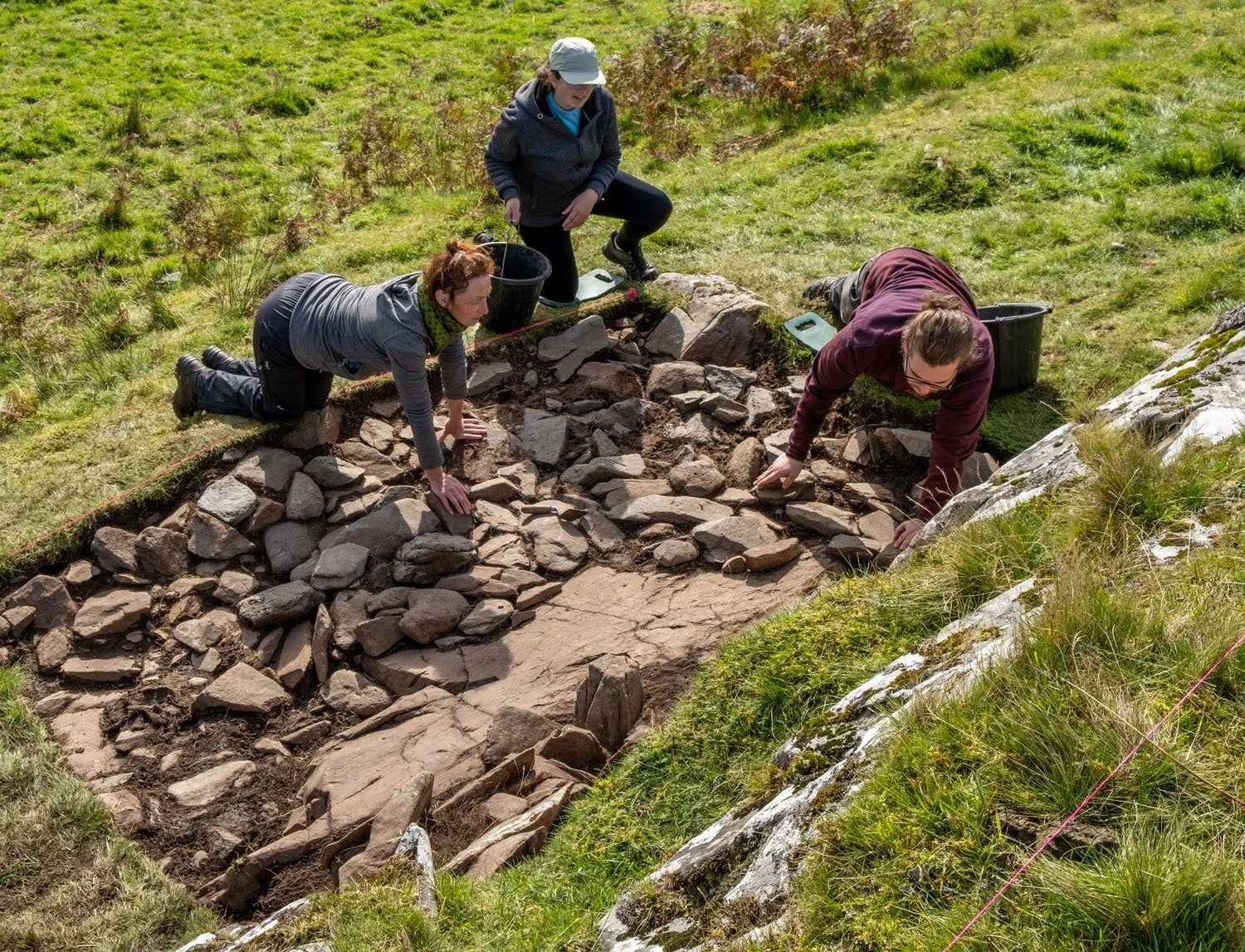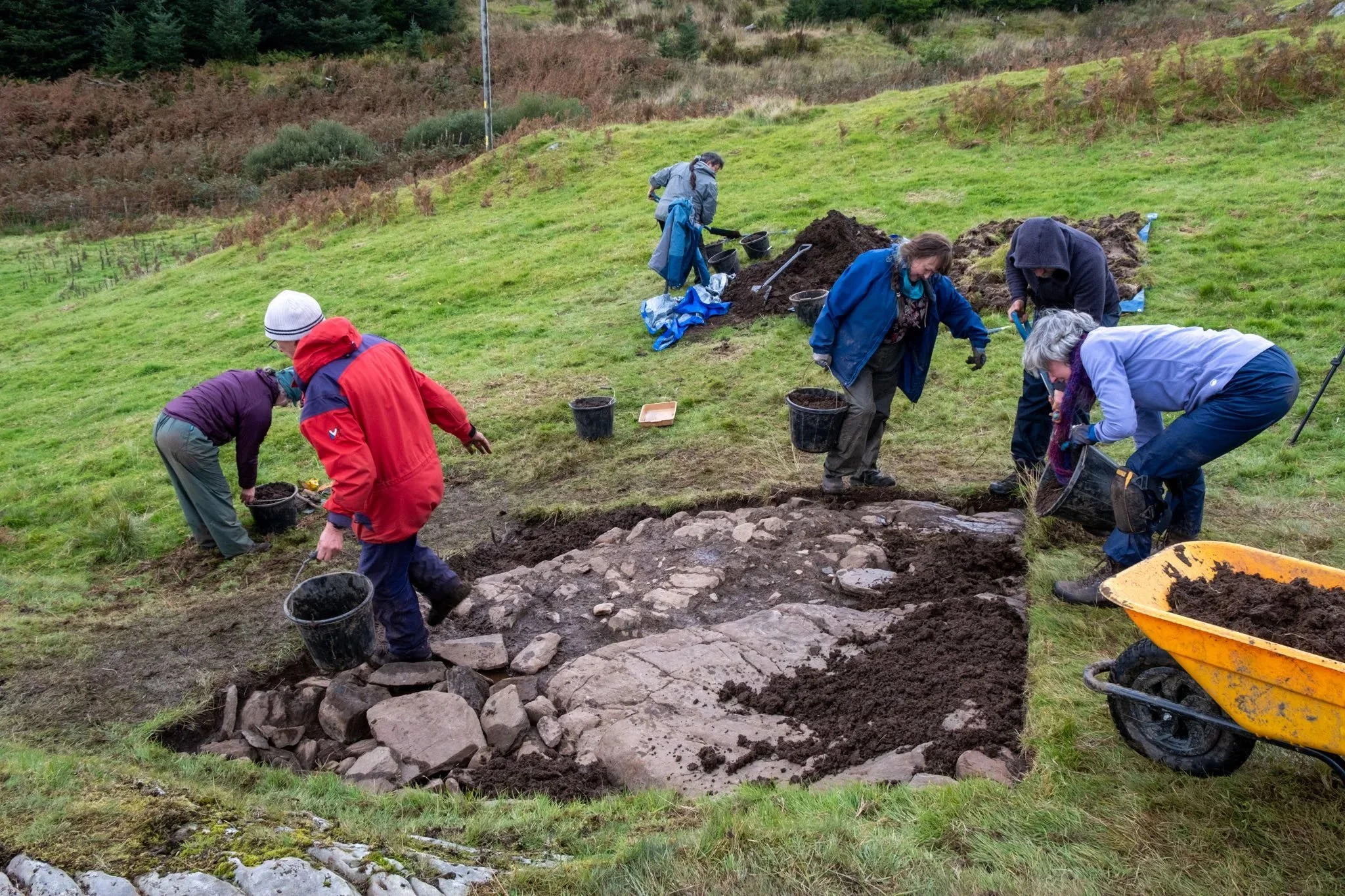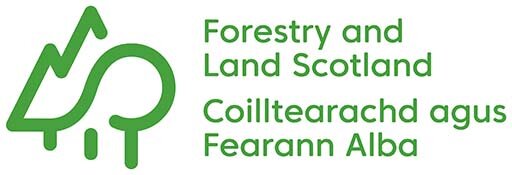Carnasserie Rock Art Excavation 2023
The Fieldwork
The excavations took place over two weeks in September 2023. It was decided beforehand that each site would be investigated with two trenches. To begin the process, we laid out the trench boundaries and removed the turf from the surface. As the soil below was revealed, we began using trowels. When working close to the rocks, we used plastic and wooden tools to avoid leaving scratch marks.
Rock Art Site 1
The main trench in this location was positioned to investigate the largest and most complex cup and ring markings known at Carnasserie. Our goal was to determine whether the carvings extended beyond those visible and to understand the nature and extent of the outcrop. A smaller trench nearby explored a quarried outcrop for comparison.
Above: Laying out the trenches at Site 1 (Photo: Aaron Watson)
Above: Work begins at Site 1 (Photo: Aaron Watson)
Above: The dig team inspects progress at Site 1 (Photo: Aaron Watson)
Rock Art Site 2
Similar to Site 1, one of the trenches here was placed to explore the extent of the prehistoric carvings and to uncover more of the outcrop on which they were situated. The second trench was located in a natural hollow immediately below the carvings, a spot that is sometimes found to be significant at similar sites.
Above: Excavating around the rock art in the higher trench at Site 2 (Photo: Aaron Watson)
Above: The team enjoys lunch overlooking Site 2, the lower trench in the foreground (Photo: Aaron Watson)
Rock Art Site 3
The most upstanding of the outcrops required a different approach. The largest trench was set on what appeared to be a natural terrace below the steep rock face and directly beneath the carvings. The second trench was positioned high on the outcrop, between two groups of carvings.
Above: Laying out the trenches at Site 3 (Photo: Aaron Watson)
Above: The lower trench at Site 3 under excavation (Photo: Aaron Watson)
Once all the trenches had been recorded, we began the process of filling them in and replacing the carefully cut turf.
Above: Filling in the trenches at the end of the project (Photo: Aaron Watson)
Who Did the Digging?
The fieldwork was co-directed by Dr Aaron Watson and Dr Sharon Webb (Kilmartin Museum) and Dr Gavin MacGregor and Kieran Manchip (Archaeology Scotland). Julia Hamilton and Jacquelyn Condie from Kilmartin Museum’s Education Team facilitated school visits and supported the open days. The excavation work would not have been possible without the help of over 40 volunteers, primarily from the local community. At the project’s onset, everyone was introduced to the landscape and its archaeology; each day began with an overview of the ongoing findings. Training was provided throughout for those with no previous experience in archaeology because excavation requires skill, and rock art sites can be particularly sensitive.
The project was designed to maximise opportunities for participation and included student placements, fieldwork training, and a program of educational events that engaged over one hundred schoolchildren.
There’s nothing quite like being part of a team during an archaeological excavation like this. It’s hard work but very rewarding. You never know when an unknown rock carving or artefact might be uncovered. Although the weather was often unkind, we were compensated by some fascinating archaeology, the stunning setting and sightings of eagles overhead.
Please click below for further information about the project:
Many thanks
The Carnasserie Farm Rock Art project was funded by the National Lottery Heritage Fund. The fieldwork was co-directed by Dr Aaron Watson and Dr Sharon Webb (Kilmartin Museum) and Dr Gavin MacGregor and Kieran Manchip (Archaeology Scotland). Julia Hamilton and Jacquelyn Condie from Kilmartin Museum’s Education Team facilitated school visits and supported the open days. We want to say a massive thank you to all the volunteers who made the project possible and to geologist Dr Roger Anderton for his expertise. Thanks also to Ann Clark for the lithics analysis, Dr Susan Ramsay for the archaeobotanics and Dr Alison Sheridan for commenting on the pottery. Finally, we extend our grateful thanks to the landowner at Carnasserie Farm, Rosemary Neagle.
